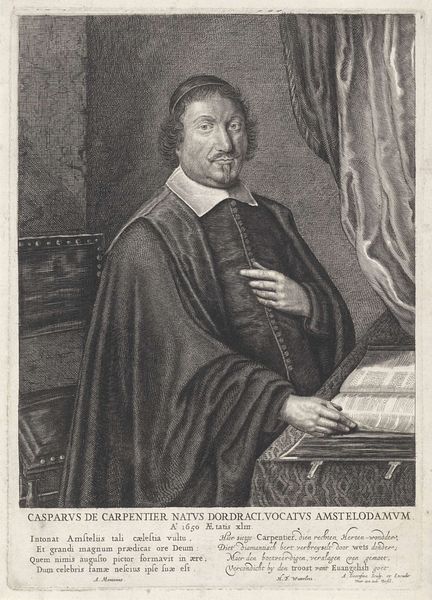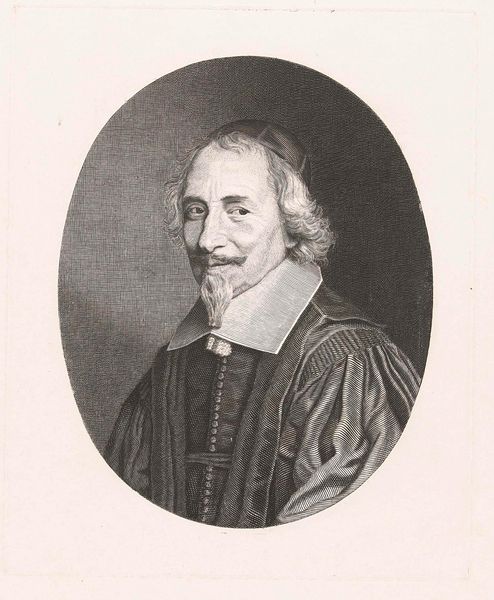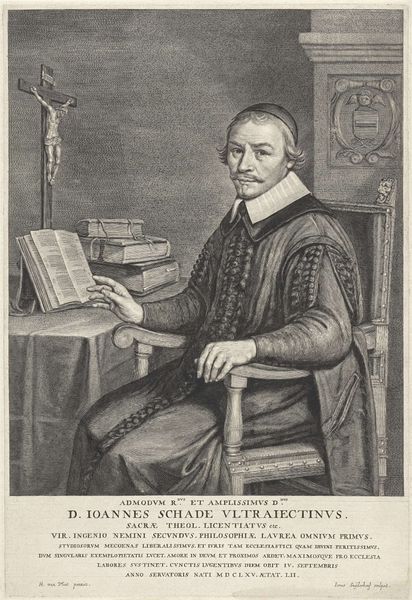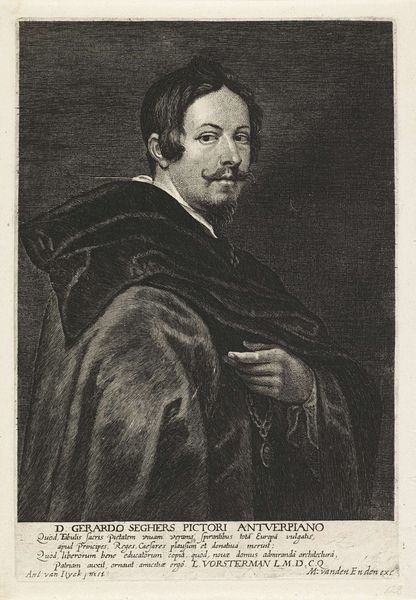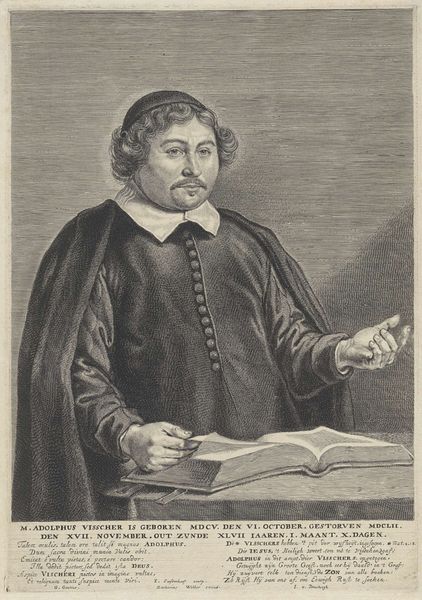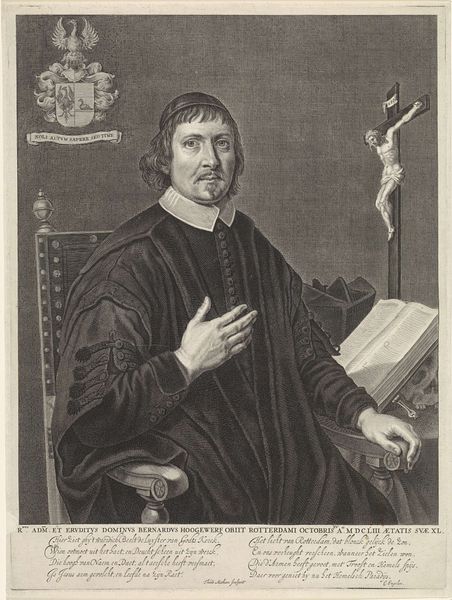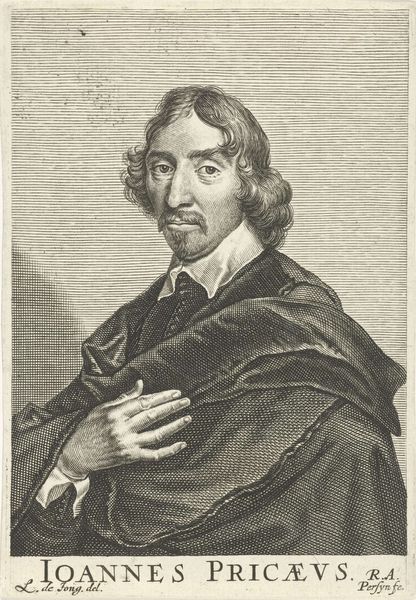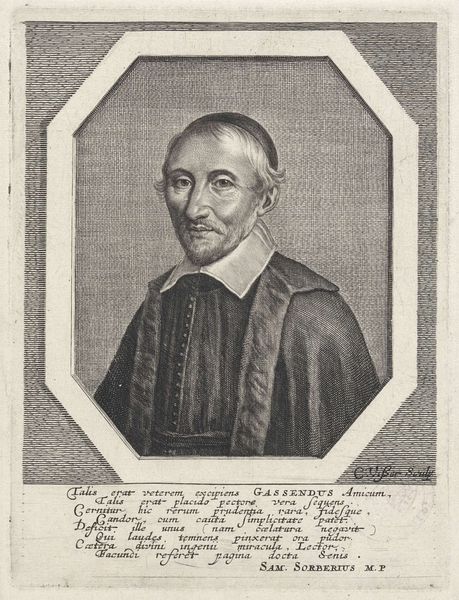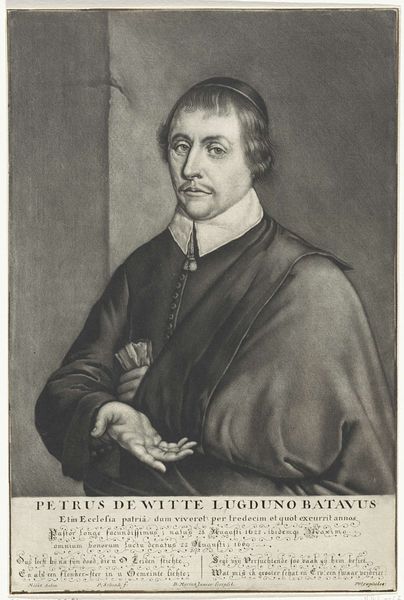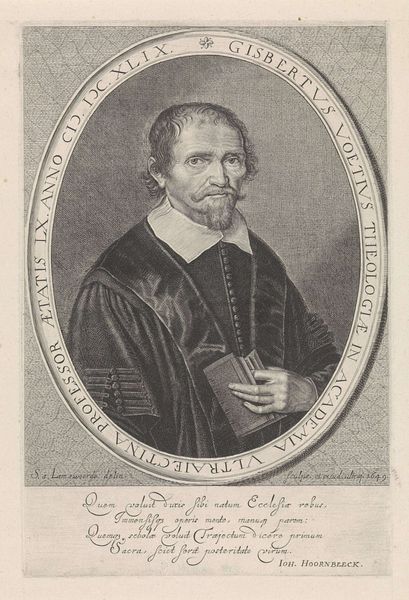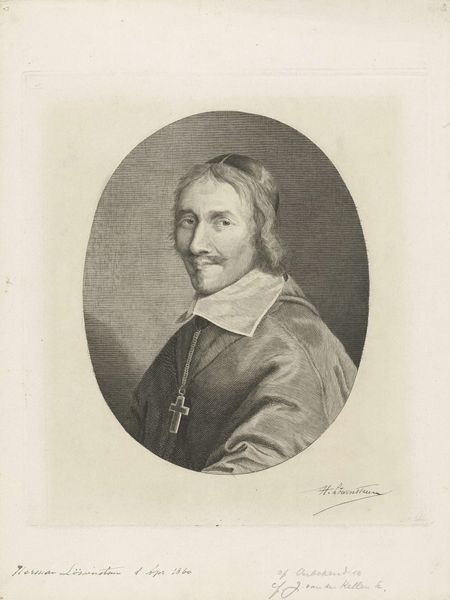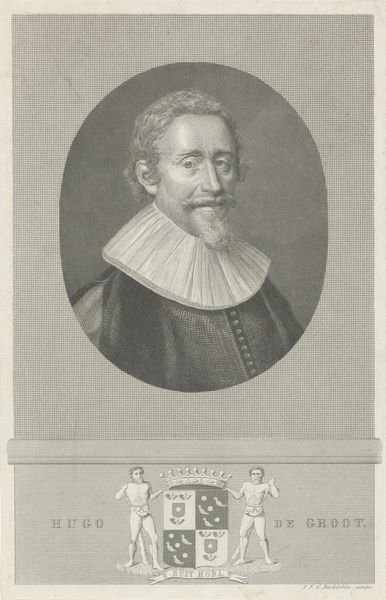
print, engraving
#
portrait
#
baroque
# print
#
old engraving style
#
portrait drawing
#
engraving
Dimensions: height 236 mm, width 188 mm
Copyright: Rijks Museum: Open Domain
Editor: Here we have "Portret van de schilder Hendrick Dubois," an engraving created sometime between 1682 and 1725 by Cornelis Visscher. There's a quiet dignity to this portrait, almost like a fleeting moment captured. What catches your eye? How would you interpret this work within its time? Curator: Well, first we need to address the context. Prints like these served a crucial function beyond just being art objects. They acted as vital forms of visual communication. Consider this portrait as existing within a network of artistic exchange, patronage, and public image construction. Do you notice the reference to van Dyck, both artistically and in the print's inscription? Editor: Yes! It says "Ant. van Dyck pinxit." It's almost like crediting him as the originator of the painting this engraving is based on. Curator: Exactly. These prints, especially portraits, circulated images of notable figures. It was about solidifying a painter's reputation and, more importantly, presenting a specific identity of Hendrick Dubois to the public. This particular image being held by the Rijksmuseum, begs a question; whose narrative were the institutions promoting and how? Were the selection and preservation politically motivated, in the present or the past? Editor: So it's not just about the individual portrayed, but the systems of power at play, influencing who is remembered and how? I never really considered the institution itself as a key part of understanding the artwork! Curator: Precisely. Museums aren't neutral containers; they shape how we understand the past through curation. Consider how exhibiting or hiding particular artworks constructs history itself. What did you learn? Editor: That the simple act of viewing art becomes more layered when we think about institutions as an active, conscious participant! Thanks for helping me connect the dots.
Comments
No comments
Be the first to comment and join the conversation on the ultimate creative platform.
